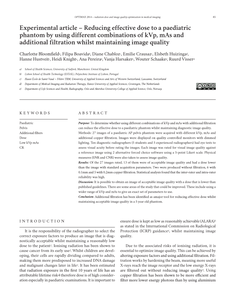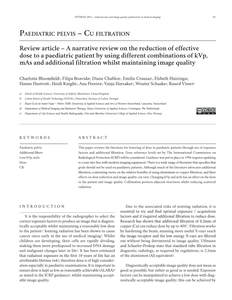The copper(II) catalyzed enantioselective 1,4-addition reactions of diethylzinc to cyclic enones in the presence of novel phosphorus amidite ligands, easily prepared from α,α,α',α'-tetraphenyl-2,2'-dimethyl-1,3- dioxolane-4,5-dimethanol (TADDOL) derivatives, resulted in e.e.s up to 71% for cyclohexenone and up to 62% for cyclopentenone. A remarkable enhancement of enantioselectivity was observed upon the addition of powdered molecular sieves to the reaction mixture.
DOCUMENT
Indigenous Papuans on the western half of the island of New Guinea, have experienced intersecting environmental, social, and political crises, within the context of a movement seeking self-determination. These ongoing crises are exacerbated by longstanding grievances over the Grasberg mine (which contains significant reserves of copper and gold), and environmental degradation caused by the mining and palm oil sectors, as well as the legacy of colonialism on the allocation of land and resources.
DOCUMENT

The Smart Current Limiter is a switching DC to DC converter that provides a digitally pre-set input current control for inrush limiting and power management. Being able to digitally adjust the current level in combination with external feedback can be used for control systems like temperature control in high power DC appliances. Traditionally inrush current limiting is done using a passive resistance whose resistance changes depending on the current level. Bypassing this inrush limiting resister with a Mosfet improves efficiency and controllability, but footprint and losses remain large. A switched current mode controlled inrush limiter can limit inrush currents and even control the amount of current passing to the application. This enables power management and inrush current limitation in a single device. To reduce footprint and costs a balance between losses and cost-price on one side and electromagnetic interference on the other side is sought and an optimum switching frequency is chosen. To reduce cost and copper usage, switching happens on a high frequency of 300kHz. This increases the switching losses but greatly reduces the inductor size and cost compared to switching supplies running on lower frequencies. Additional filter circuits like snubbers are necessary to keep the control signals and therefore the output current stable.
DOCUMENT

Purpose: To determine whether using different combinations of kVp and mAs with additional filtration can reduce the effective dose to a paediatric phantom whilst maintaining diagnostic image quality.Methods: 27 images of a paediatric AP pelvis phantom were acquired with different kVp, mAs and additional copper filtration. Images were displayed on quality controlled monitors with dimmed lighting. Ten diagnostic radiographers (5 students and 5 experienced radiographers) had eye tests to assess visual acuity before rating the images. Each image was rated for visual image quality against a reference image using 2 alternative forced choice software using a 5-point Likert scale. Physical measures (SNR and CNR) were also taken to assess image quality.Results: Of the 27 images rated, 13 of them were of acceptable image quality and had a dose lower than the image with standard acquisition parameters. Two were produced without filtration, 6 with 0.1mm and 5 with 0.2mm copper filtration. Statistical analysis found that the inter-rater and intra-raterreliability was high.Discussion: It is possible to obtain an image of acceptable image quality with a dose that is lower than published guidelines. There are some areas of the study that could be improved. These include using a wider range of kVp and mAs to give an exact set of parameters to use.Conclusion: Additional filtration has been identified as amajor tool for reducing effective dose whilst maintaining acceptable image quality in a 5 year old phantom.
DOCUMENT

This paper reviews the literature for lowering of dose to paediatric patients through use of exposure factors and additional filtration. Dose reference levels set by The International Commission on Radiological Protection (ICRP) will be considered. Guidance was put in place in 1996 requires updatingto come into line with modern imaging equipment. There is a wide range of literature that specifies that grids should not be used on paediatric patients. Although much of the literature advocates additional filtration, contrasting views on the relative benefits of using aluminium or copper filtration, and theireffects on dose reduction and image quality can vary. Changing kVp and mAs has an effect on the dose to the patient and image quality. Collimation protects adjacent structures whilst reducing scattered radiation.
DOCUMENT

DOCUMENT

DOCUMENT

Legislation in the Netherlands requires routine analysis of drinking water samples for cultivable Legionella species from high-priority installations. A field study was conducted to investigate the presence of Legionella species in thermostatic shower mixer taps. Water samples and the interior of ten thermostatic shower mixer taps were investigated for cultivable Legionella species. In seven cases, Legionella species was found in at least one of the samples. In four cases, Legionella species was detected in the biofilm on the thermostatic shower mixer taps interior, with the highest values on rubber parts, and in five cases in the cold supply water. These results show that thermostatic shower mixer taps can play a role in exceeding the threshold limit for cultivable Legionella species, but the cold supply water can also be responsible. Practical implications: This study showed that contamination of thermostatic shower mixer taps (TSMTs) with Legionella spp. was frequently observed in combination with contamination of the water system. Consequently, a combined focus is necessary to prevent the proliferation of cultivable Legionella spp. in TSMTs. In addition, the results also demonstrated that biofilms on rubbers inside the TSMT had high numbers of Legionella spp., probably because rubber contains relatively high concentrations of biodegradable substrates. Therefore, improvement of the rubber materials is necessary to reduce the proliferation of cultivable Legionella spp. in TSMTs.
DOCUMENT

DOCUMENT

In this paper we will describe and present the results of an experiment at the Fontys University of Professional Education in which engineering students work together with students from other disciplines in a multidisciplinary group at the end of their study on a real-life environmental problem outside the university. Since 1994 there has been a possibility for engineering students to graduate in this way, in a multidisciplinary group. First a rough sketch will be given of the background and the educational model. In this sketch attention will be paid to the different role which the student as well as the teacher play in this kind of education. The characteristics of this model will be explained. Then it will be made clear what the results were in the past years with respect to content as well as to the learning of skills. At the end some conclusions will be given.
DOCUMENT